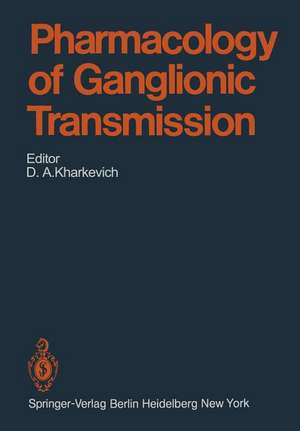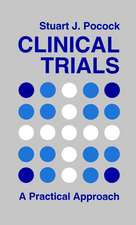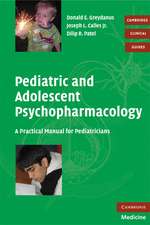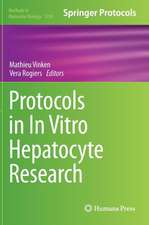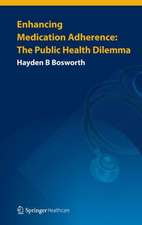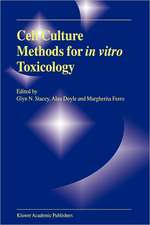Pharmacology of Ganglionic Transmission: Handbook of Experimental Pharmacology, cartea 53
Editat de D. A. Kharkevich Contribuţii de D.M. Aviadoen Limba Engleză Paperback – 15 noi 2011
Din seria Handbook of Experimental Pharmacology
- 5%
 Preț: 3517.78 lei
Preț: 3517.78 lei - 5%
 Preț: 1425.97 lei
Preț: 1425.97 lei - 5%
 Preț: 1435.28 lei
Preț: 1435.28 lei - 5%
 Preț: 1430.52 lei
Preț: 1430.52 lei - 5%
 Preț: 1930.69 lei
Preț: 1930.69 lei - 5%
 Preț: 1922.47 lei
Preț: 1922.47 lei - 5%
 Preț: 1937.46 lei
Preț: 1937.46 lei - 5%
 Preț: 2117.58 lei
Preț: 2117.58 lei - 5%
 Preț: 2119.96 lei
Preț: 2119.96 lei - 5%
 Preț: 2117.38 lei
Preț: 2117.38 lei - 5%
 Preț: 1088.17 lei
Preț: 1088.17 lei - 5%
 Preț: 1098.27 lei
Preț: 1098.27 lei - 5%
 Preț: 1420.29 lei
Preț: 1420.29 lei - 5%
 Preț: 1104.84 lei
Preț: 1104.84 lei - 5%
 Preț: 1104.84 lei
Preț: 1104.84 lei - 5%
 Preț: 1108.14 lei
Preț: 1108.14 lei - 5%
 Preț: 1106.69 lei
Preț: 1106.69 lei - 5%
 Preț: 1105.77 lei
Preț: 1105.77 lei - 5%
 Preț: 1174.35 lei
Preț: 1174.35 lei - 5%
 Preț: 1432.50 lei
Preț: 1432.50 lei - 5%
 Preț: 408.48 lei
Preț: 408.48 lei - 5%
 Preț: 409.63 lei
Preț: 409.63 lei - 5%
 Preț: 539.90 lei
Preț: 539.90 lei - 5%
 Preț: 720.47 lei
Preț: 720.47 lei - 5%
 Preț: 733.09 lei
Preț: 733.09 lei - 5%
 Preț: 731.27 lei
Preț: 731.27 lei - 5%
 Preț: 746.43 lei
Preț: 746.43 lei - 5%
 Preț: 747.72 lei
Preț: 747.72 lei - 5%
 Preț: 725.24 lei
Preț: 725.24 lei - 5%
 Preț: 742.80 lei
Preț: 742.80 lei - 5%
 Preț: 393.23 lei
Preț: 393.23 lei - 5%
 Preț: 735.66 lei
Preț: 735.66 lei - 5%
 Preț: 728.33 lei
Preț: 728.33 lei - 5%
 Preț: 389.52 lei
Preț: 389.52 lei - 5%
 Preț: 730.71 lei
Preț: 730.71 lei - 5%
 Preț: 740.58 lei
Preț: 740.58 lei - 5%
 Preț: 730.19 lei
Preț: 730.19 lei - 5%
 Preț: 723.42 lei
Preț: 723.42 lei - 5%
 Preț: 731.27 lei
Preț: 731.27 lei - 5%
 Preț: 726.68 lei
Preț: 726.68 lei - 5%
 Preț: 3516.49 lei
Preț: 3516.49 lei - 5%
 Preț: 729.26 lei
Preț: 729.26 lei - 5%
 Preț: 737.11 lei
Preț: 737.11 lei - 5%
 Preț: 730.92 lei
Preț: 730.92 lei - 5%
 Preț: 738.78 lei
Preț: 738.78 lei - 5%
 Preț: 909.94 lei
Preț: 909.94 lei - 5%
 Preț: 720.10 lei
Preț: 720.10 lei - 5%
 Preț: 734.74 lei
Preț: 734.74 lei - 5%
 Preț: 727.80 lei
Preț: 727.80 lei
Preț: 734.17 lei
Preț vechi: 772.81 lei
-5% Nou
Puncte Express: 1101
Preț estimativ în valută:
140.53€ • 152.70$ • 118.12£
140.53€ • 152.70$ • 118.12£
Carte tipărită la comandă
Livrare economică 21 aprilie-05 mai
Preluare comenzi: 021 569.72.76
Specificații
ISBN-13: 9783642673993
ISBN-10: 3642673996
Pagini: 556
Ilustrații: XVI, 534 p.
Dimensiuni: 170 x 244 x 29 mm
Greutate: 0.88 kg
Ediția:Softcover reprint of the original 1st ed. 1980
Editura: Springer Berlin, Heidelberg
Colecția Springer
Seria Handbook of Experimental Pharmacology
Locul publicării:Berlin, Heidelberg, Germany
ISBN-10: 3642673996
Pagini: 556
Ilustrații: XVI, 534 p.
Dimensiuni: 170 x 244 x 29 mm
Greutate: 0.88 kg
Ediția:Softcover reprint of the original 1st ed. 1980
Editura: Springer Berlin, Heidelberg
Colecția Springer
Seria Handbook of Experimental Pharmacology
Locul publicării:Berlin, Heidelberg, Germany
Public țintă
ResearchCuprins
1 Ganglionic Transmission: Morphology and Physiology.- A. Pathways in the Autonomic Ganglia.- B. Synaptic Transmission in Autonomic Ganglia.- C. Summary.- References.- 2 Ganglionic Metabolism.- A. Carbohydrate Metabolism.- B. Stimulation.- C. Nonglucose Metabolites Substrates.- D. Lipids.- E. Amino Acids.- F. Uptake and Efflux of Amino Acids.- G. RNA Protein.- H. Protein.- References.- 3 Methods for the Examination of Ganglion-Blocking Activity.- A. Introduction.- B. General Physiological and Pharmacological Aspects of the Evaluation of Ganglion-Blocking Agents.- C. Pharmacological Methods.- D. Preparations Other Than Autonomic Ganglia Used for Evaluation of Ganglion-Blocking Agents.- E. Screening for Ganglion-Blocking Activity.- F. Evaluation of Non-Nicotinic Ganglion-Blocking Agents.- G. Methods for the Determination of Absorption, Distribution, and Excretion of Ganglion-Blocking Agents.- H. Clinical Testing of Ganglion-Blocking Agents.- J. Critical Appraisal of the Experimental Methods Used in the Evaluation of Ganglion-Blocking Agents.- K. Conclusions.- References.- 4a Relationship Between Chemical Structure and Ganglion-Blocking Activity. a) Quaternary Ammonium Compounds.- A. Introduction.- B. Structure-Activity Relationships in Different Structural Types of Quaternary Ganglion-Blocking Agents.- C. Conclusions.- References.- 4b Relationship Between Chemical Structure and Ganglion-Blocking Activity. b) Tertiary and Secondary Amines.- A. Introduction.- B. Structure-Activity Relationships in Different Structural Types of Non-Quaternary Ganglion-Blocking Agents.- C. Conclusions.- References.- 5 Locus and Mechanism of Action of Ganglion-Blocking Agents.- A. Introduction.- B. Competitive Blocking Agents.- C. Depolarising Agents.- D. Intraganglionic Distribution of Ganglion-Blocking Drugs.- Addendum.- References.- 6 Action of Ganglion-Blocking Agents on the Cardiovascular System.- A. Introduction.- B. Hypotensive Action.- C. Cardiac Function.- D. Systemic Vascular Beds.- I. Cerebral Circulation.- II. Renal Circulation.- III. Pulmonary Circulation.- IV. Splanchnic Circulation.- V. Limb Circulation.- E. Conclusions.- References.- 7 Action of Ganglion-Blocking Agents on the Gastrointestinal Tract..- A. Introduction.- B. Salivary Secretion.- C. Oesophagus and Cardiac Sphincter.- D. Gastric Motility.- E. Gastric Secretion.- F. Pancreatic Secretion.- G. Small Intestine.- H. Colon.- References.- 8 Absorption, Distribution, Fate, and Excretion of Ganglion-Blocking Compounds..- A. Introduction.- B. Onium Compounds.- C. Secondary and Tertiary Amines.- References.- 9 Nicotinic Ganglion-Stimulating Agents.- A. Introduction.- B. Pharmacological Ambiguities of Ganglionic Receptors.- C. Postjunctional Responses to Acetylcholine and Nicotinic Agents.- D. Blockade of Transmission by Nicotinic Drugs.- E. Denervated Ganglia.- F. Conclusions.- References.- 10 Non-Nicotinic Chemical Stimulation of Autonomic Ganglia.- A. Introduction.- B. Muscarinic Ganglion Stimulants.- C. 5-Hydroxytryptamine (5-HT) and Related Indolealkylamines.- D. Histamine.- E. Polypeptides.- F. Cardiac Glycosides.- G. Veratrum Alkaloids.- H. Batrachotoxin.- J. Inorganic Cations.- K. Conclusions.- References.- 11 Ganglion Activity of Centrally Acting Neurotropic Agents..- A. Introduction.- B. Methods.- C. Volatile Anaesthetics.- D. Central Nervous System Depressants.- E. Neuroleptics.- F. Antidepressants.- G. Anti-Manic Drugs.- H. Narcotic Analgesics.- J. Central Nervous System-Stimulant Drugs.- K. Tranquillisers.- L. Anticonvulsant Drugs.- References.- Note Added in Proof.- 12 Ganglionic Actions of Anticholinesterase Agents, Catecholamines, Neuro-Muscular Blocking Agents, and Local Anaesthetics.- A. Anticholinesterase Agents.- B. Catecholamines.- C. Neuromuscular Blocking Agents.- D. Local Anaesthetics.- E. Conclusions.- References.- 13 Ganglionic Activity of Cardiovascular Drugs..- A. Introduction.- B. Antihypertensive Drugs.- C. Vasoconstrictors.- D. Cardiotropic Drugs.- References.- 14 Ganglion-Blocking Agents in Internal Medicine..- A. Introduction.- B. Ganglion-Blocking Agents in the Treatment of Hypertension.- C. Ganglion-Blocking Agents in the Treatment of Peptic Ulcer.- References.- 15 Ganglion-Blocking Agents in Anaesthesiology..- A. Introduction.- B. General Characteristics of the Use of Ganglion-Blocking Agents for Artificial Hypotension.- C. Use of Artificial Vasodilatation for Various Surgical Interventions and Pulmonary Oedema.- References.- Author Index. V.V. Maisky.- Subject Index. V. V. Maisky.
